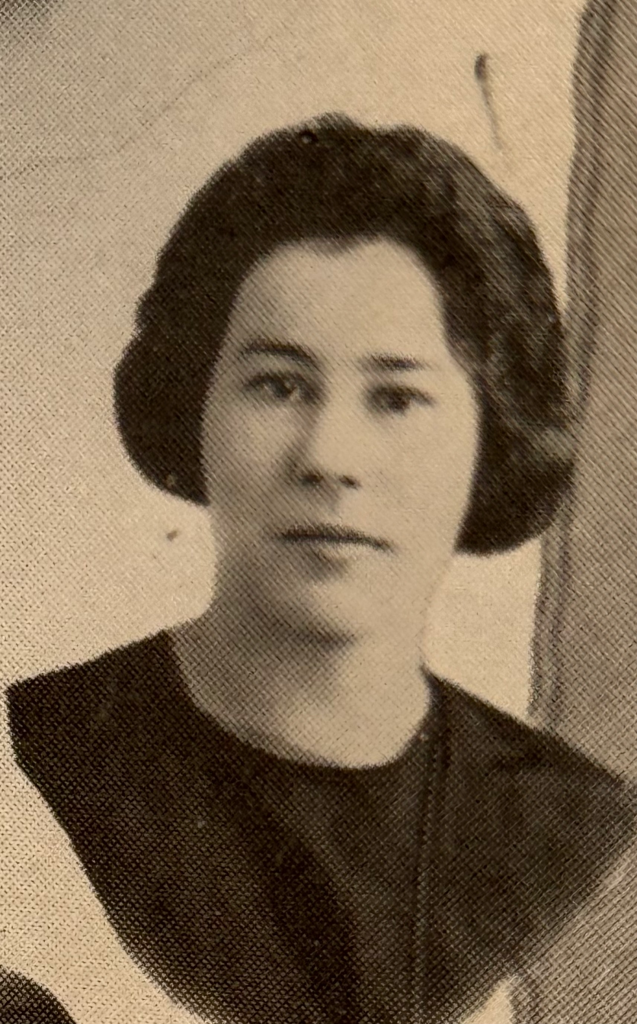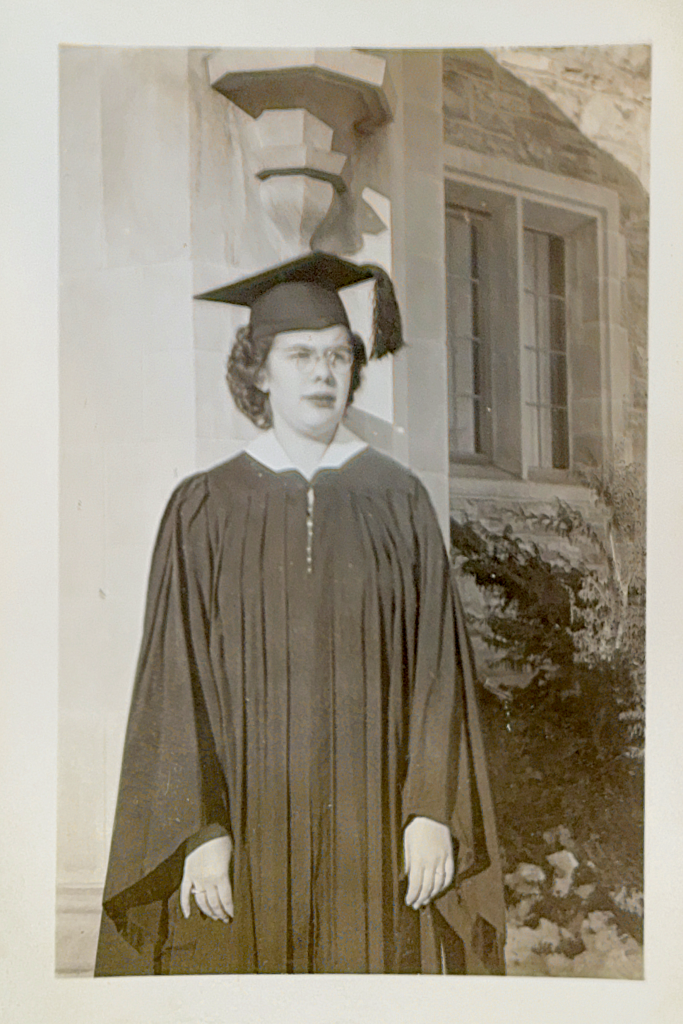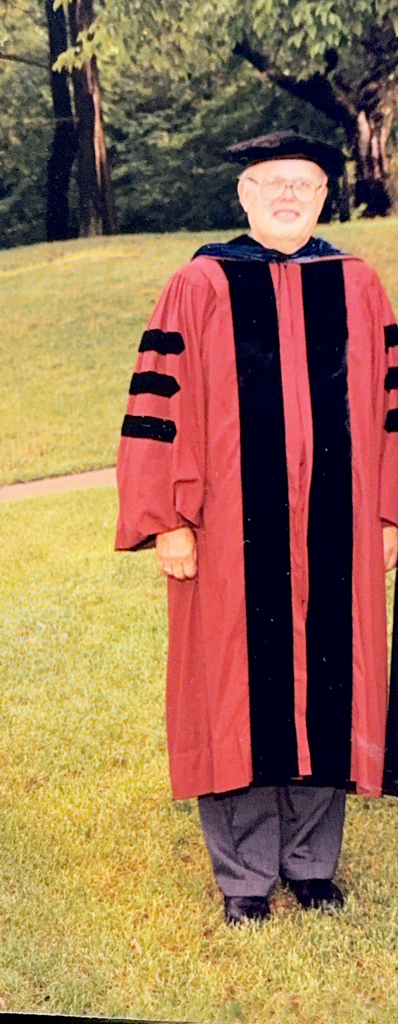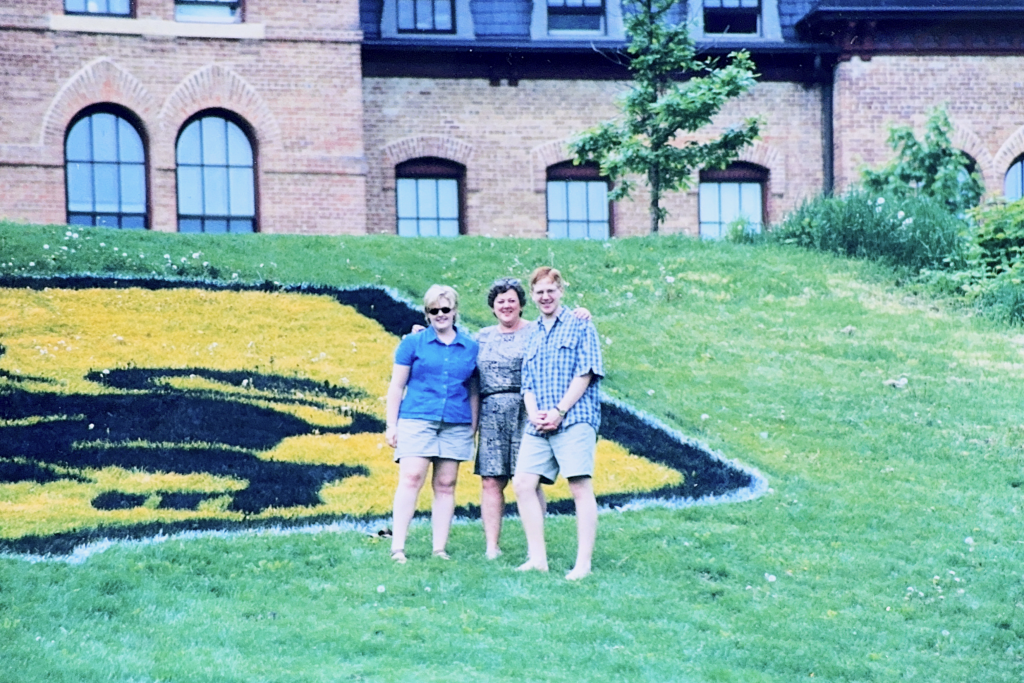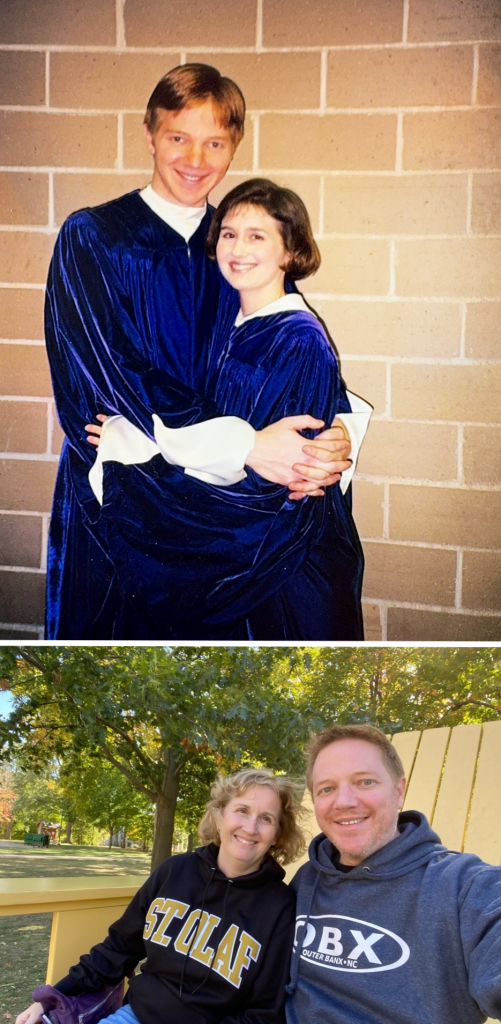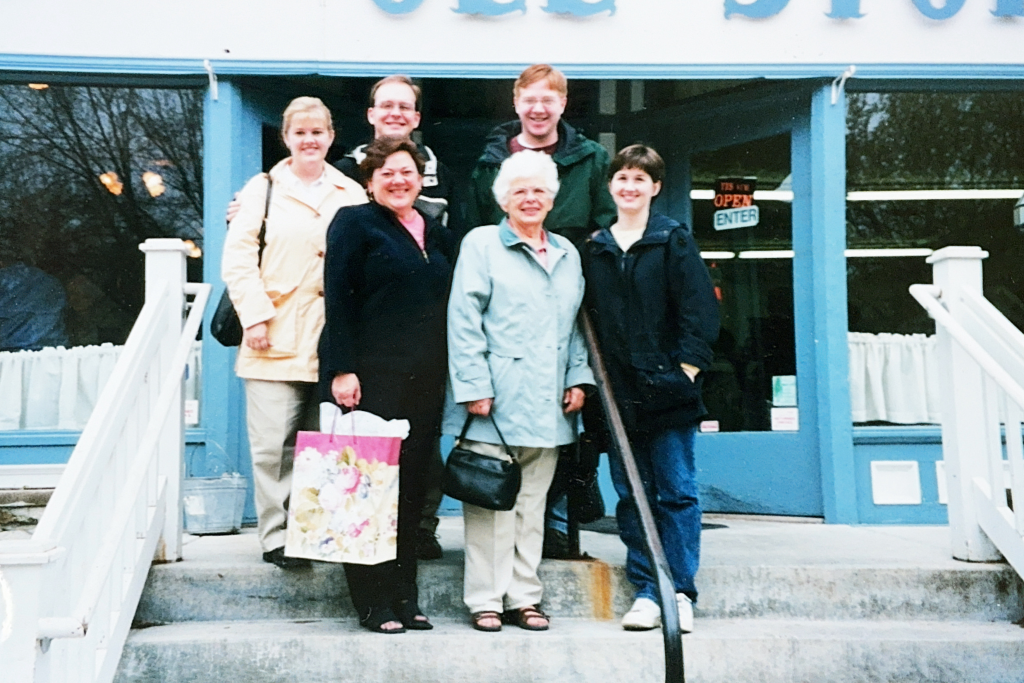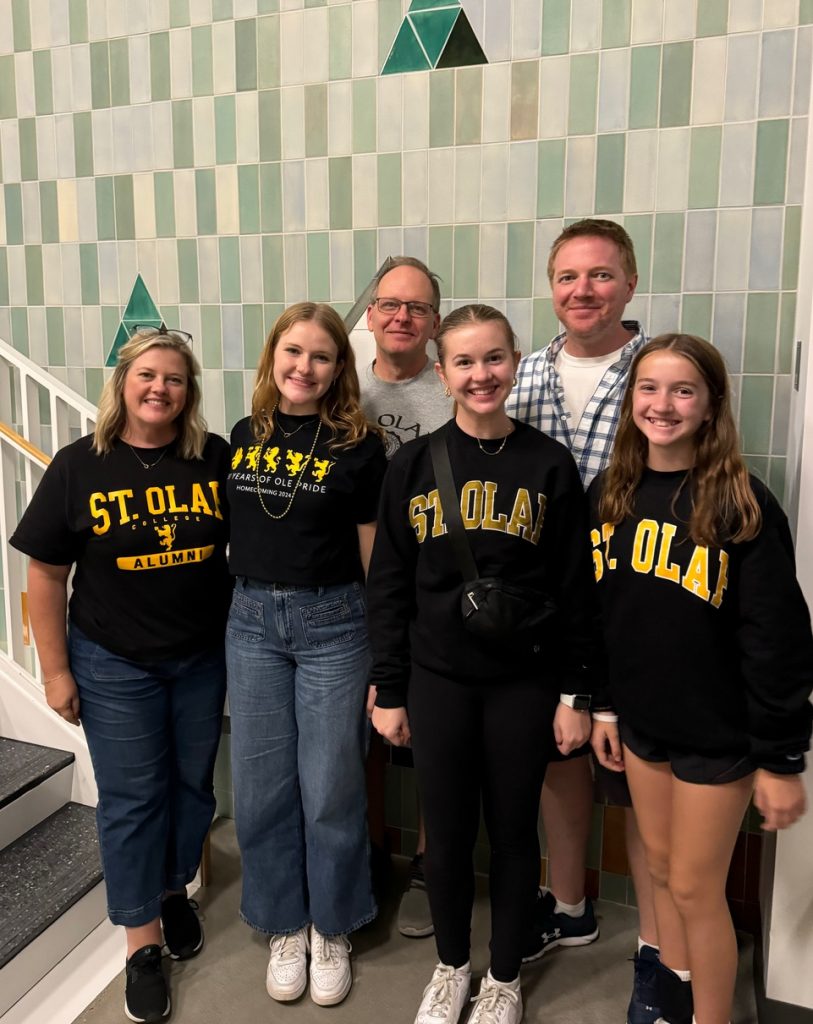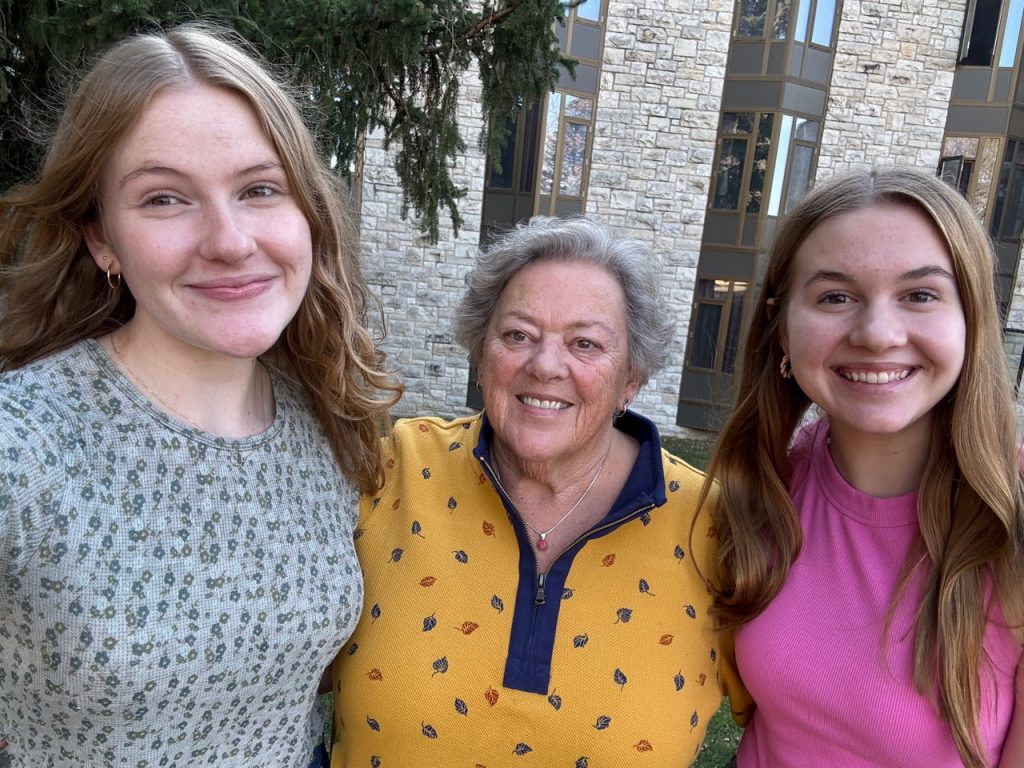My St. Olaf College story for its 150th anniversary observation spans 100 years, framed by graduations in 1925 and 2025.
For more than a century, five generations of my family share a legacy of personal memories of people, experiences that resonate from one time to another, and awareness of both continuity and changes at the college. Our five generations of Oles are 11 family members, made up of three sister-brother pairs, two spouses, a first-year student beginning in the fall of 2024, and a senior graduating in May 2025. St. Olaf College provided us with the foundations for meaningful lives and careers. We are and have been educators in K-12 and baccalaureate institutions, mental health professionals in schools and communities, caretakers of century farms, a judge, school and church leaders, and supportive family members.
First Generation: 1922–25
In 1925, at the end of the college’s 50th anniversary year, the first person from my family, my great aunt Bertha Fogde, graduated from St. Olaf. From a mostly Danish but a bit Norwegian family—a distinction that would elicit comment from a St. Olaf professor years later, she taught high school following graduation. By 1932, she had earned an M. A. at the Teachers College of Columbia University in household arts. She continued in Columbia’s summer courses, including a 1935 field course in Hawaii and Japan and curriculum workshops. By 1945, Bertha Fogde was at Gustavus Adolphus College as the founding faculty of their Home Economics Department.
She was the living link for her niece and nephew to legendary St. Olaf figures like Gertrude Hilleboe, F. Melius Christiansen, and “Prexy” Boe, among others — and to the importance of attendance at both chapel and football games! Being a good student was just assumed, as were dedicated faculty, some of whom she praised for their “erudition” and distinctive lectures. As she wrote to my mother in 1942-43, her friend “Miss Hilleboe … ranks outstandingly among college deans.” She also wrote to my mother about “Dr. C … directing orchestra [as] an experience you’ll never forget.” For her, St. Olaf was “always in the front ranks when it comes to educational [offerings] … of all the church schools, St. Olaf has a better standing …”
Second Generation: 1942-1955 — First Sister-Brother Pair
Mary Evelyn Fogde Rose ’46 and her brother, Myron Fogde ’55, found St. Olaf familiar. They experienced the things that their aunt had emphasized in her letters and conversations with them: the academic rigor, dedication of faculty and staff, and the importance of the religious and social life of the college.
My mother, a math and economics major, experienced St. Olaf during World War II as a college primarily of women but with a contingent of Navy men in separate training and residence. She knew Miss Hilleboe as the dean concerned about women students staying out past curfew — probably with those Navy men. Since my mother had a below ground-level room in Mellby Hall, she also knew about curfew violations since her windows provided easy access back into the dorm for her room- and dorm-mates! As she learned for herself, her experience playing music for F. Melius Christiansen, or “Dr. C,” in the orchestra was memorable. It could also be intimidating, given Christiansen’s high expectations for musical skills and performance. In particular, she recounted his direction to the French horn section to “just transpose as you play” when the music was not written for a horn tuned to the key of F. Nonetheless, the St. Olaf music tradition remained a source of pride for her as for the next generations who participated in ensembles and Christmas Festivals.
Her memories of her advisor, Professor of Mathematics Clarence Carlson, were of support in the challenging courses in a strong Mathematics Department. On the occasions she returned to campus after graduation, she either went to see him, or his wife, or — eventually — drove by the house where they had lived and welcomed students. Although she taught mathematics only briefly, she used her academic preparation for almost 60 years in the management of the family farm expenses and of her church’s finances.
My uncle, Myron Fogde, remembered wondering at his sister’s 1946 graduation if St. Olaf was the college he would attend several years later. By the time he matriculated in 1951, the college had returned to its pre-war demographics and begun to grow enrollment and facilities. Dean Hilleboe, still active at the college, was the speaker at the cornerstone-laying ceremony for the dormitory named in her honor.
For Myron the most important person and experience of his time at St. Olaf and for his future occurred when he met Professor of History and Department Chair Agnes “Aggie” Larson. Because of a family history assignment, Dr. Larson called him to her office and queried him about his post-baccalaureate plans. She determined that he needed further preparation in research methodology if he expected to go to graduate school after seminary. She rectified that deficit by creating an independent research tutorial and oral exam for him. He was successful in the tutorial and exam but acknowledged (somewhat sardonically) that he took only the number of credits his senior year that would allow him to live on campus and have a cafeteria ticket! Sixty years later, Dr. Fogde remembered as well that Aggie Larson, “being Norwegian,” had some reservations about him “being Danish.” Nonetheless, she was his mentor. He always credited her for his academic and scholarly career in church history and religion — he taught for 35 years at Augustana College in Rock
Island, Illinois … among the Swedes!
Third Generation: 1965–1972 — Second Sister-Brother Pair
By the time I, Cheryl Rose Jacobsen ’69, and my brother, Richard Rose ’72, experienced St. Olaf for ourselves, we “met” those important to the previous two generations in the portraits, names of residence halls, the music traditions, and in a few faculty. My first experience of the college was my uncle’s graduation in 1955. Ten years later as a first-year student, I visited my mother’s advisor’s home to buy a Norwegian sweater (for $25) from Mrs. Carlson. While those links across generations suggest continuity, the period between my admission and my brother’s graduation was one of challenge and change. Walter Mondale, who was the commencement speaker for my class in 1969, chose as his topic “campus unrest” as he saw it nationally as well as at St. Olaf. (He entered his address into the United States Congressional Record shortly after delivering it on campus.)
The unrest I experienced initially was quite local: frustrations about restrictions that fell more heavily on women than men. For women, the rules included no pants allowed for class attendance, earlier curfew hours, and “supervised” co-ed visits in the women’s residence hall lounges (the ghost of Dean Hilleboe lingered, perhaps). One of my friends was discovered and reprimanded for studying in a bathroom stall after the required lights-out time (10:15 p.m., maybe)! Most of those social restrictions disappeared during my first year.
The range and magnitude of the changes on campus accelerated from 1965 to 1969. My sense of that period is of shock and confusion over the Martin Luther King Jr. assassination, along with increasing tensions over civil rights, the Vietnam War, and the military draft. The riots in Minneapolis meant that I had to decide — and confront my own ideals and fears — whether I should prioritize my student-teaching choices to the inner-city schools. Matters that had been local and personal became more national and political and then back to personal again.
My brother’s experience of this trajectory also was tied to the Vietnam War, as that played out politically on campus in the spring of 1970 with the student strike and closing of campus. Although he had a low draft number, some of his friends and family did not; some were already conscripted and in ‘Nam.
Nonetheless, we also experienced “normal” college life. Christmas Festivals continued, with my first with Manitou Singers in the old gym and my last in the new Skoglund Gym with Chapel Choir. My brother was able to take advantage of the relatively new curriculum and calendar option of studying away during Interim at another 4-1-4 institution to take a history major elective. History, rather than the politics that permeated the campus culture, was his lifelong interest, although not his career. He chose to return to the family farm. Back in his home community, he served for years on the local school board, church boards, and community economic development board — sometimes hotbeds of political and historical differences!
There is a very clear line from my St. Olaf experiences and the rest of my life, a consequence of the liberal arts tradition of the curriculum and co-curricular programs. An English major, I chose additional work in history and the fine arts and performed in vocal ensembles. My Interim courses were implicitly cross-disciplinary or interdisciplinary — theater of the absurd or church music history, for example. Based on my undergraduate foundation, I completed two interdisciplinary graduate degrees and had a long teaching and administrative career in undergraduate colleges. For half of that career, I taught in multiple disciplinary and interdisciplinary programs. I am convinced that the other half of my professional life as a chief academic officer and provost was more successful because of my liberal arts, multi-disciplinary, and co-curricular experiences. St. Olaf provided my first exposure to the richness and strength of this sector of higher education: the baccalaureate, liberal arts college grounded in values and traditions while responsive to innovation and change.
Fourth Generation: 1992–1999 — Third Sister-Brother Pair
My daughter, Carey Jacobsen ’96, discovered a wonderful coincidence at St. Olaf when she learned that her Mellby Hall lower-level dorm room had been her grandmother’s. She certainly had not heard of her grandmother breaking the rules before! Other experiences as a Junior Counselor (a residence life innovation introduced by Gertrud Hilleboe in the 1930s) and Interim Study Abroad in Greece were highlights for her, as was participation in the chamber orchestra. Two other experiences — one in which she practically lived for a spring semester in the Art Barn to complete her senior art exhibit and the other an Interim internship at a Minneapolis child development site where she was “thoroughly put in [her] place by a 4-year old” — were early indications of her career direction. An important psychology advising conversation helped her identify art therapy as a direction for graduate work that would integrate her art and psychology majors and experiences. That path evolved into a career in mental health — first as a therapist primarily with children and now as an administrator for school-based mental health programs.
Participation in chamber orchestra also was an especially significant St. Olaf experience: she and her husband, Michael Marlett ’94, met as cello stand partners. Following Carey’s graduation, they married and pursued graduate degrees. His graduate degree in community mental health counseling is the basis of his professional practice with families and youth.
As part of his undergraduate psych major, Michael participated in an animal behavioral group research project that he remembers clearly: the feeding behaviors of fish. The study, conducted at a stream near Northfield, turned into a successful presentation of data complete with photos, timetables, and charts. The immediate follow-up “research” activity of fly fishing (after data collection for the course project) has continued twice a year with a group of his St. Olaf friends. Michael also participated in Global Semester in 1992, traveling to seven countries over the course of five months. He recently revisited that experience, sharing his global journal and additional stories with their daughter, Elise Marlett ’25, as she reflects on her fall 2023 Global Semester.
As part of the third sister-brother pair at St. Olaf, my son Brook Jacobsen ’99 was prepared to go to St. Olaf without considering other colleges. He chose St. Olaf, however, because it had what he considered important and “better” — and a sister with a car on campus. When he needed to declare a major, he found choosing among the options challenging; at least six discipline possibilities, some for which he tutored, had existed. Fortunately, an American studies major offered an interdisciplinary framework for a range of disciplinary courses that led him to a law degree and a career as a county prosecutor and now a district judge.
It was music, however, that provided his most enduring memories. A member of the St. Olaf Choir for three years, he toured parts of the United States and, during an Interim, Australia and New Zealand. That interim tour was unique in its exposure to Aboriginal music, especially the over-tone singing that amazed the home audience in Minneapolis’ Orchestra Hall. As for many generations of Oles, student-initiated small ensembles also were part of the music experience. Brook was one of the first members of Cantus when the ensemble was founded in 1995, singing and touring with the group until he entered law school. On those early tours, Cantus carried St. Olaf information and promotional brochures along with 11 young men, repertoire plans, clothes, concert dress, banners, programs, food, and a few other props in a 15-passenger van. Cantus continues as a professional performance group. Brook sings in community choirs—and can still sing along with the Cantus and St. Olaf Choir recordings.
His wife, Jennifer Kenyon Jacobsen ’99, a high school classmate, entered St. Olaf also planning to continue her involvement with music but not with a specific major in mind. She experienced an academic environment with memorable faculty, especially in psychology and English, and many opportunities in music. An Interim psychology internship in the Northfield Public Schools counseling program confirmed a career path for her. After a graduate degree in school counseling, she has been an elementary school counselor in a school with more than 400 students. One of the more valued aspects of Jen’s time at St. Olaf was that co-curricular music ensembles were open to all students regardless of major. Following Manitou Singers, she was a member of Chapel Choir, and then for two years the St. Olaf Choir. In addition to Christmas Festivals and Ole Choir tours throughout the U.S., she also had the unique experience of being part of the “back-up chorus” for Michael Crawford during his recording session for the On Eagles’ Wings CD. She has at least four of those CDs among her Ole Choir discs. As at St. Olaf, music remains an important part of Jen’s life through participation in church choirs, bell choirs, community choirs, and occasional duets with Brook.
Fifth Generation: 2021—
Elise Marlett ’25, a fifth-generation Ole, will graduate in May 2025 — 100 years after the first person from my family graduated. Elise has been successful in her psychology and race and ethnic studies majors. She has found her “places” on campus in the Natural Lands, as a hockey fan, in a Marketing and Communications Office position writing about student and faculty successes, and with Chapel Choir. She has grown in understanding and developed resilience that will be important in whatever her future holds. Developing resilience began in her first year with learning to watch the class registration rosters for that important psych class opening. When her first music audition was disappointing, she sought support from her Manitou Singers conductor and friends in order to transition her instrument knowledge and skills to vocal performance. She will graduate with four years of music ensembles and three Christmas Festivals worth of memories.
I suspect, however, that her most significant experience will be the Fall 2023 Global Semester, which drew upon students’ resilience as they experienced the trauma of the October attack on Israel and the subsequent termination of their Jordan program. Thanks to Global faculty’s support and St. Olaf’s extensive study-abroad experience, the Global Semester continued to completion in Vietnam. Presently she is capturing the experience — and reflecting on its importance — in a more than 250-page Global “memoir,” a compilation of her journals, assignments, speakers notes, excerpts from her fellow “Globies,” observations, and photographs. A scrapbook with more physical artifacts and photos will follow.
Anna Jacobsen ’28 has a family legacy, but she will have her own St. Olaf choices, experiences, and eventually memories. She began her college experience in the fall of St. Olaf’s sesquicentennial year with strong high school academic preparation and participation in vocal music and dance. While she may hesitate when asked about a major, she will have opportunities to explore, to learn, to be challenged, and have the support for taking risks — personally, intellectually, and socially.
Conclusion:
In broad themes, my family shares what many others have also experienced at St. Olaf: the undergraduate, holistic preparation that carried us forward in our personal and professional lives. In that preparation, we found intellectual challenges and mentors, developed interests, values, and skills that opened up lifelong possibilities, performed music and more music, and increasingly benefitted from experiential learning and global exposure. Along the way, we all developed friendships that lasted, continue to last, throughout our lives. Fram, Fram, St. Olaf! in this sesquicentennial year.
